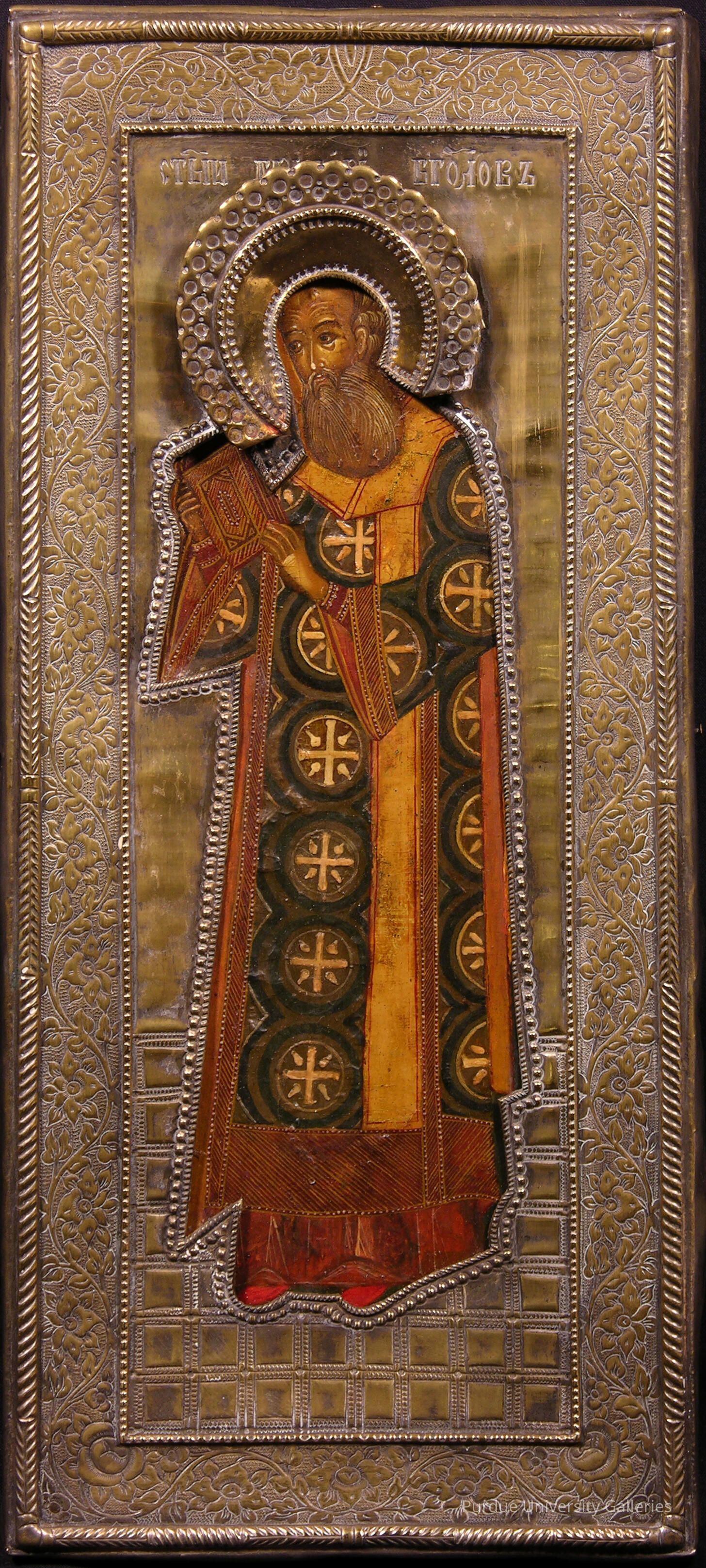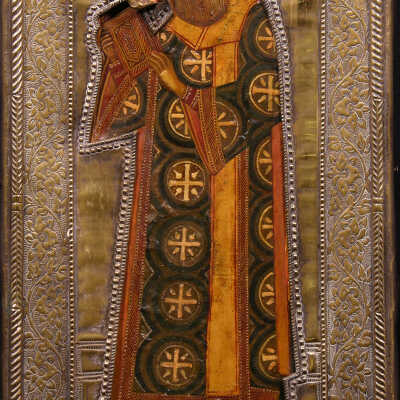St. Gregory the Theologian
Name/Title
St. Gregory the TheologianEntry/Object ID
2005.02.075Description
Painting on flat wooden panel covered by metal riza with floral and scroll border. A Cyrillic caption is engraved in the top center of the riza. The painting shows a man with greying-brown beard bent to the left holding a gospel book. He wears red robes with a olive green stole decorated in yellow cross motifs. He has a raised riza halo with circular decorations.Type of Painting
PanelCollection
Betsy Scheuring Icon CollectionAcquisition
Accession
2005.02Source or Donor
Betsy ScheuringAcquisition Method
GiftCredit Line
Gift of Betsy ScheuringMade/Created
Place
Country
RussiaLexicon
Nomenclature 4.0
Nomenclature Secondary Object Term
IconNomenclature Primary Object Term
Symbol, ReligiousNomenclature Sub-Class
Religious ObjectsNomenclature Class
Ceremonial ObjectsNomenclature Category
Category 08: Communication ObjectsDimensions
Height
14-1/4 inWidth
6-1/2 inDepth
1-1/4 inExhibitions
Spirit Made Tangible: The Scheuring Icon Collection (2006)
Surveying the Sacred: Analysis of the Scheuring Collection of Eastern Orthodox Icons (2025)

